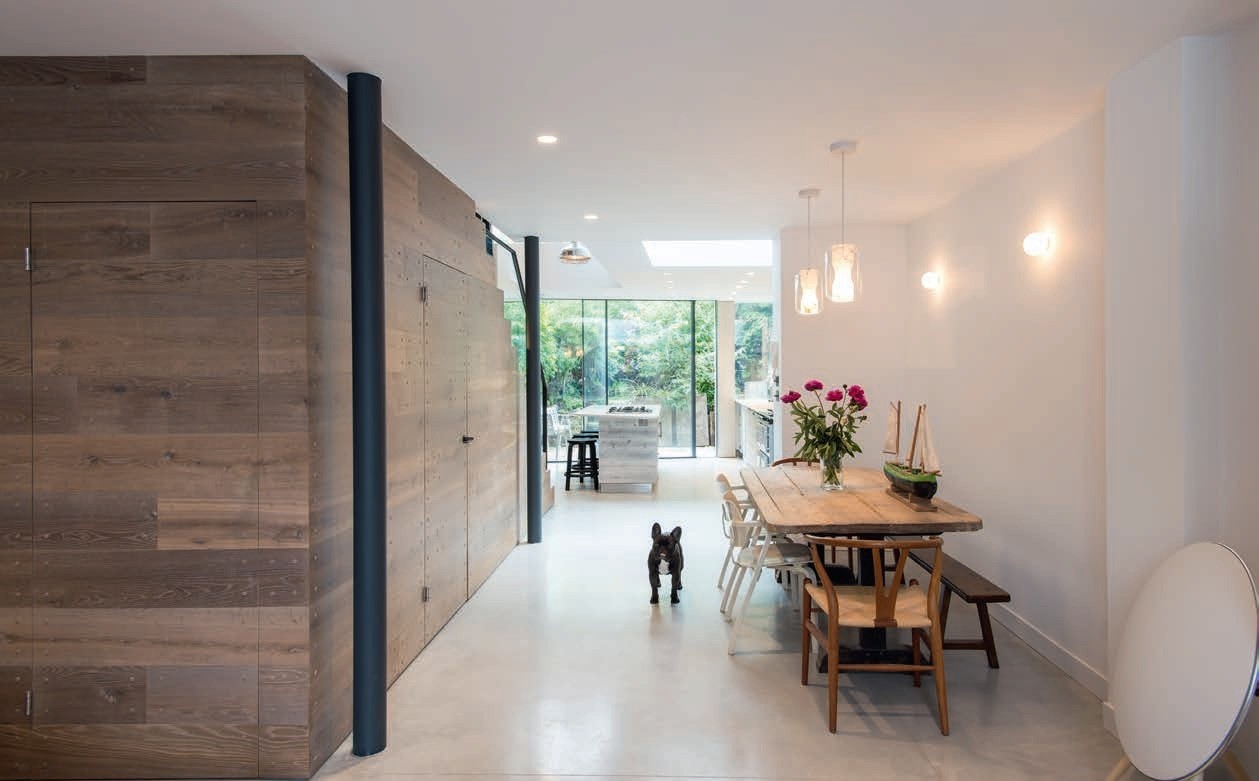
Designed by Robert Dye Architects and built by Peake Projects, this existing cellar was made habitable by excavating down to create more headroom, as well matching the new floor level to a terraced area outside
MARK NICHOLSON
If you cannot extend your home upwards or outwards, then converting a cellar is a viable option for adding more space. These transformations work especially well if living area (as opposed to bedrooms) is needed, because they are already physically close to ground-floor reception rooms. Playrooms, games zones, home offices, TV dens and utility spaces are all great uses, and by putting these functions underground, they can also transform what’s happening upstairs – reclaiming that toy-strewn dining room could open up the opportunity to create a spacious kitchen-diner, for example.
In a typical Victorian or Edwardian property, the cellar would have been used to store coal, food or other goods. It wouldn’t necessarily run under the whole house and was never intended to be a habitable space, so turning it into one can be a challenge. “Having an existing cellar tends to spur people on to start a project, because a lot of the digout work is already done,” says James Peake, director of building company Peake Projects. However, if there is any additional excavation to be done, particularly downwards below the level of existing footings, costs ramp up because of the need for structural work and extra waterproofing. “You will save something on the labour costs if there is already a cellar, but it will still be a big engineering process. It’s very disruptive,” says James.
Assessing suitability
Create a checklist to see how suitable your cellar might be for conversion. How big is the floorspace, and is it divided up into a smaller rooms that will need opening up? How dry is it? How tall are the ceilings? Is there good access or will that need to be created? Are there existing light wells or windows; and are they sufficiently large already or will they have to be made bigger?